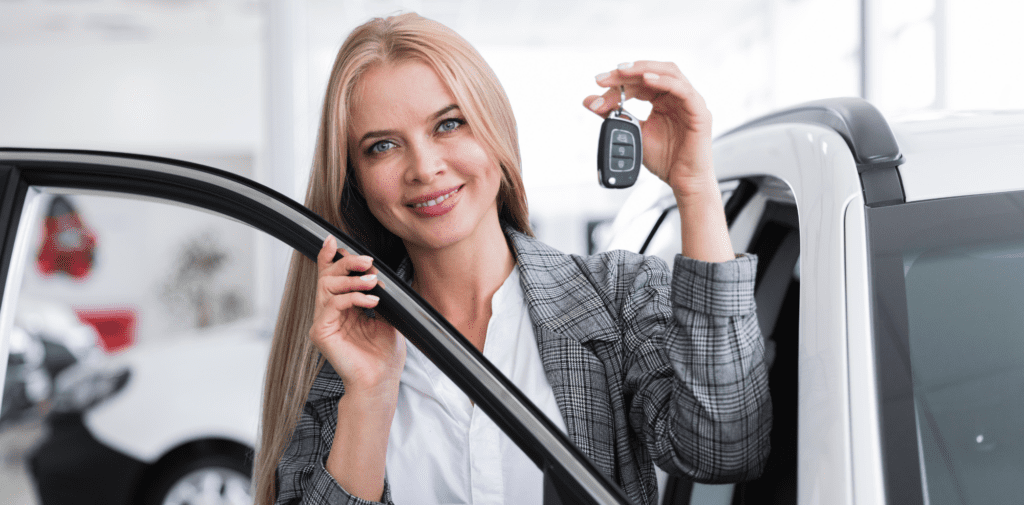
Adjusting to a new car can feel overwhelming at first. Every car has its own set of quirks, from the clutch’s biting point and brake sensitivity to the layout of the controls.
It’s only when you switch vehicles that you realise how tailored your driving habits were to your previous car. If you find yourself struggling with this change, don’t worry—there are several strategies to help ease this transition.
Whether you’ve just purchased a new vehicle, are borrowing one, or need to rent a car while on holiday, it’s important to familiarise yourself with it to enhance your driving experience. By following a few simple steps, you’ll quickly become comfortable and confident behind the wheel of your new car.
Adjusting to Driving a New Car
Getting Acquainted with Your New Vehicle
If you’ve recently passed your driving test, you might be familiar with only your instructor’s car. Once you acquire your own vehicle, it’s common to feel a bit at sea.
The challenge isn’t just about mastering unsupervised driving; it’s also about adjusting your driving style and routine to a new car.
This isn’t an issue exclusive to novice drivers. Even those with years of experience and a history of multiple vehicles can find this transition tricky.

Breaking Old Habits
It’s widely acknowledged that breaking old habits can be challenging. This explains why numerous drivers are hesitant to acclimate to a new vehicle. Nevertheless, overcoming this unease is crucial.
Feeling tense and uncertain in your new car can negatively impact your driving performance. To sidestep potential mishaps, it’s beneficial to follow a step-by-step guide to ease into driving your new car.
Before You Head Out
Familiarising Yourself with Your Vehicle
Before you start your journey in your new or used car, it’s wise to pause for a moment. Even if your new vehicle is a model similar to what you’ve driven before, you’ll still need to familiarise yourself with its layout and controls. Adapting to its unique features is essential for a smooth driving experience.
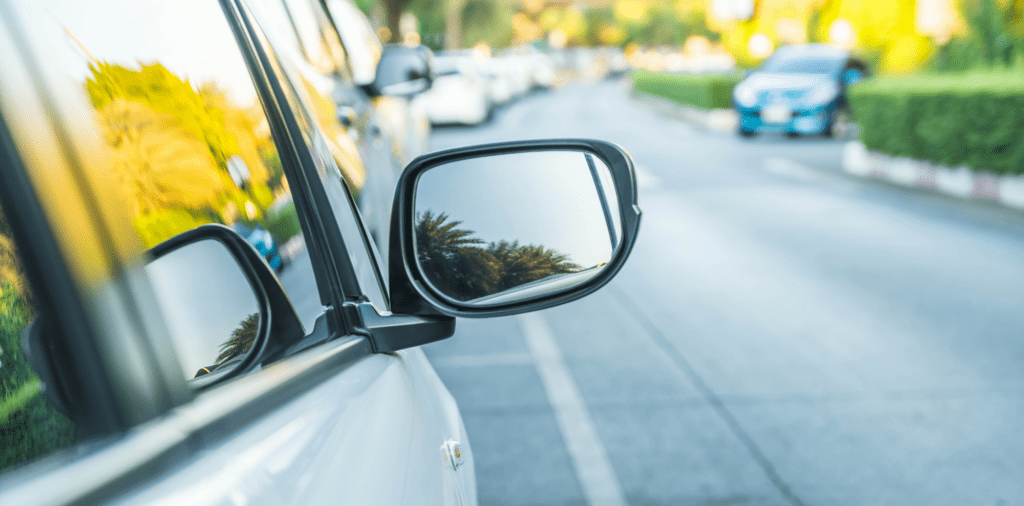
Making Adjustments
Interior Setup
Jumping into a new car and finding everything perfectly suited to your preferences is highly unlikely.
Adjustments to the steering wheel, seat, mirrors, and headrest are usually necessary to ensure you’re comfortable and correctly positioned.
These are basics you would have learned early on with your driving instructor, but a refresher is always helpful.
Steering Wheel
The steering wheel should be positioned about 12 inches from your chest to allow safe airbag deployment in the event of an accident.
Ensure you can rest your wrists on the top edge of the wheel without discomfort, maintaining contact with the backrest with your shoulders.
Seat
Adjusting your seat is crucial for optimal control and visibility. Your seat should be positioned so your knees are slightly bent when pressing the clutch, and you have a clear view of the road. The backrest should support an upright posture, typically around a 90-degree angle.
Headrest
The headrest should align with the top of your head without hindering your ability to check blind spots. Adjust it to ensure it’s at the correct height for safety and comfort.
Mirrors
Before driving, ensure your mirrors are adjusted for a clear view of the road behind and to the sides.
The interior mirror should offer a comprehensive view of the rear, while side mirrors should include a slight view of your car’s sides and the horizon beyond.
It might take a few minutes or an hour to get everything adjusted just right, but like Goldilocks, it’s important to ensure everything is just right before you set off.
Locating the Controls
Familiarising Yourself Before You Drive
Understanding your vehicle’s layout and controls is crucial before hitting the road. Imagine the chaos of trying to find your windscreen wipers in a sudden downpour! It’s essential to know where each control is to avoid any stressful situations, especially in challenging driving conditions.
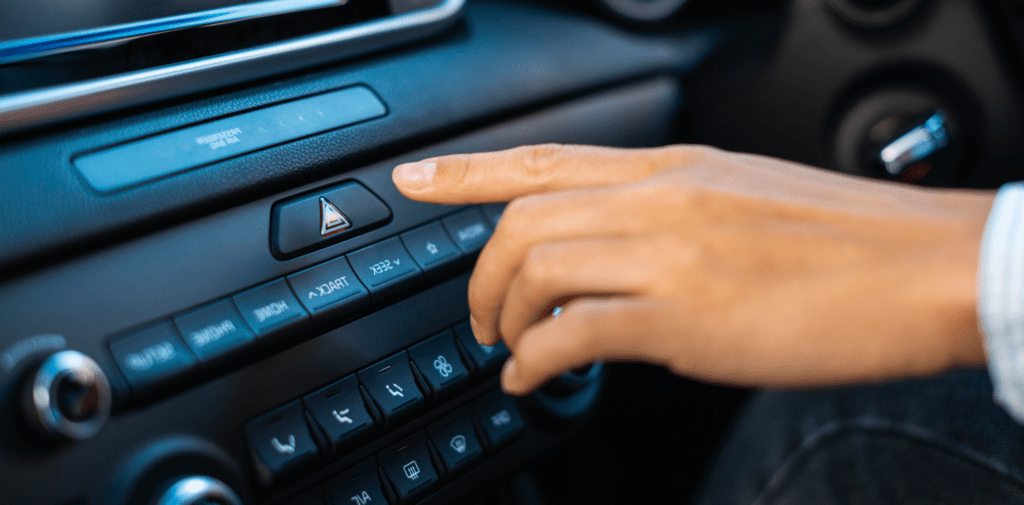
Learning Methods
Depending on your learning style, you might prefer a hands-on approach, sitting behind the wheel to explore and test the controls directly.
This method works well for those who learn through doing. Alternatively, if you lean towards a theoretical approach, grabbing your vehicle’s handbook and studying it can be incredibly beneficial.
The key is to take your time with this process, ensuring you can identify and use each control without hesitation. This knowledge is vital for safe driving, particularly on fast roads like motorways.
Reinforcing Your Knowledge
If you’re struggling to remember the placement and function of your car’s controls, involving a family member or friend can be helpful.
They can quiz you while sitting in the passenger seat, asking you to locate and explain each control. This method not only reinforces your memory but also simulates a real driving scenario where quick access to controls is necessary.
For a nostalgic twist, you could even incorporate “show me, tell me” questions similar to those used in driving tests. Examples include:
- How would you wash and clean the rear windscreen?
- Can you switch on your dipped headlights?
- How would you demist the front windscreen?
This approach is an excellent way to ensure you’re thoroughly acquainted with your vehicle’s controls, boosting your confidence and safety on the road.
Mastering Your Vehicle’s New Dimensions
Assessing Your Car’s Exterior
After becoming comfortable with the interior of your new car, it’s time to step outside and familiarise yourself with its exterior.
Take a leisurely stroll around your vehicle to fully appreciate its dimensions. Is it noticeably larger than your previous car?
This means you’ll need to exercise extra caution and awareness, particularly when attempting tasks like parallel parking. If it’s smaller, you’re in luck—manoeuvring into compact parking spots should now be easier!
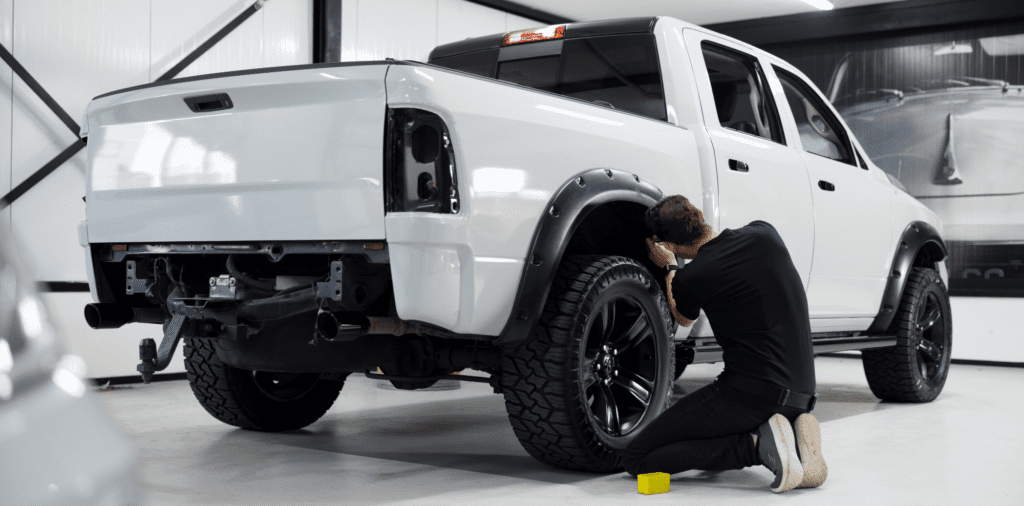
Adapting to New Dimensions on the Road
Being mindful of your car’s size and proportions is vital while driving. You’ll likely need to make some adjustments to your road position to accommodate its new dimensions.
This awareness is crucial not only for parking but also for navigating through traffic, ensuring a safe distance from other vehicles, and manoeuvring in tight spaces.
Conducting a Safety Inspection
Initial Exterior Checks
It’s important for drivers to regularly inspect their cars to ensure they remain in excellent condition. This holds true whether your vehicle is used or brand new.
Begin with a thorough examination of your tyres, verifying that they have at least the minimum tread depth of 1.6mm and that their pressure aligns with the recommendations in your vehicle’s handbook.
Don’t forget to inspect your front and rear lights as well, ensuring they are fully operational.

Under the Hood Inspections
Moving on to the engine compartment, there are several key checks you need to perform to ensure your car’s safety and reliability:
- Hydraulic Brake Fluid: Confirm that the brake fluid is at a safe level, as this is crucial for maintaining effective braking performance.
- Engine Coolant: Check that there’s enough engine coolant to prevent overheating, especially important in both hot weather and when the engine is under significant strain.
- Engine Oil: Ensure the engine oil is at a sufficient level, as oil is essential for lubricating engine parts and keeping the engine running smoothly.
These steps are fundamental to maintaining your vehicle’s safety and performance, helping to prevent breakdowns and extend the lifespan of your car.
Starting Off Slowly
Familiarising Yourself with the Pedals
After making all the necessary adjustments in your car and locating all the essential controls, it’s time to begin driving.
However, before you venture onto the motorway, it’s wise to get acquainted with your new pedals. Even for those experienced with new cars, each vehicle’s pedals can feel unfamiliar at first. Rest assured, they will become more intuitive with time.
To acclimatise to the feel of your new car, consider taking it to an empty car park or a quiet residential area. You’re looking for a space where you won’t face interruptions or pose an inconvenience to other drivers.
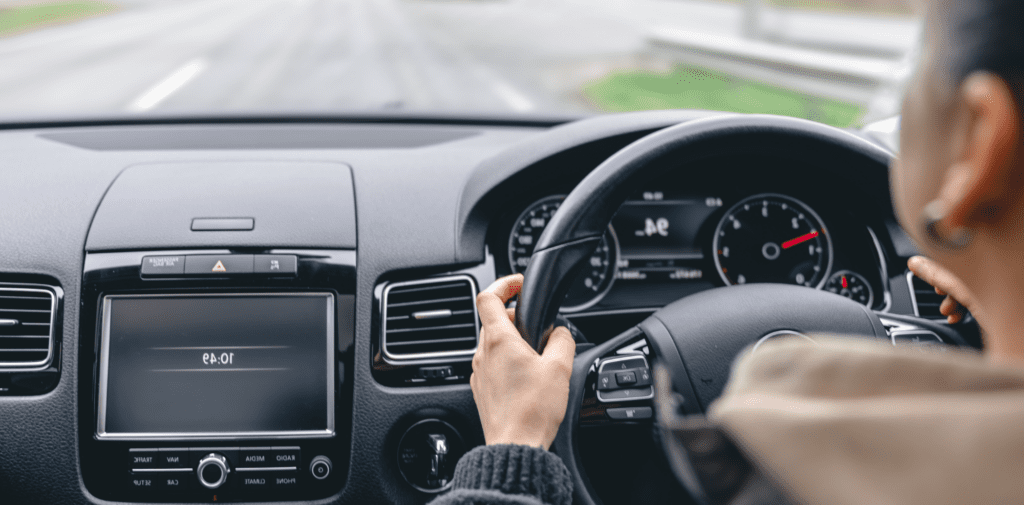
Clutch Control
Recall the effort it took to master the clutch during your driving lessons. While adapting to a new clutch might not be as challenging, it can still pose some difficulties initially.
Your muscle memory might lead you to engage the clutch as you did in your previous vehicle, but the biting point—the point where the gears begin to engage and the car starts to move—can differ significantly from one car to another.
Before you start driving around, turn on the ignition, disengage the handbrake, and practice finding the biting point. Perform this exercise repeatedly for a few minutes: find the bite, release it slightly, then find it again. Ensure you’re on a flat surface during this practice.
Adjusting to the Brakes
The braking system’s responsiveness can vary between cars. If your new vehicle’s brakes are more sensitive than you’re accustomed to, you’ll need to apply them more gently.
Conversely, if they’re less responsive, you’ll have to press harder. Adapting to this difference is crucial for safe driving.
Getting Used to the Accelerator
Similarly, your new car’s accelerator might require a different amount of force compared to what you’re used to.
Start with a light touch, particularly if your new engine is more powerful, to avoid accelerating too quickly. This gentle approach will help you get a feel for the car’s responsiveness and power without overdoing it.
Testing Yourself on the Road
Transitioning to Road Driving
After spending some time getting acquainted with your new pedals in a secluded area, you’re ready to take your skills to the next level by driving on various types of roads.
Experiencing a broad spectrum of road types and features will accelerate your familiarity with your new vehicle.

Mastering Town Driving
While town driving may often feel tedious due to its stop-start nature, it’s actually an excellent environment for adapting to a new car.
The frequent need to use your clutch, brake, and accelerator pedals in quick succession helps you quickly develop the necessary muscle memory.
Before long, you’ll find yourself more confident and comfortable, even on the motorway.
Town driving is particularly useful for practicing in lower gears and requires heightened awareness of your surroundings.
You’ll need to navigate around parked cars and be vigilant of pedestrians, making it a perfect setting for honing your driving skills.
Exploring Dual Carriageways and Motorways
After gaining confidence in town, it’s time to experience driving in higher gears on dual carriageways and motorways.
With your new vehicle, you may find yourself checking the speedometer more often as you adjust to the sensitivity of the accelerator pedal.
It’s important to remain mindful of your speed to avoid potential fines for speeding. This phase allows you to become comfortable with your car’s performance at higher speeds.
Practicing Manoeuvres
Manoeuvres can be challenging when adjusting to a new vehicle, regardless of whether you enjoy or dread them.
They play a crucial role in everyday driving, demanding significant concentration, awareness, and familiarity with your car’s dimensions and handling.
Early practice is key to mastering these essential skills, ensuring you’re prepared for a variety of driving situations.
Don’t Forget Your Essentials
Packing for Daily Travels
Now that you’re comfortable driving your new car, it’s time to think about what you’ll need for your daily journeys.
First, remember to include those easily forgotten yet essential items, such as sunglasses and change for the car park.
If navigating isn’t your strong suit, don’t forget to bring along your sat nav to help guide the way.

Essential Car Items
It’s crucial to pack your car with essential items for various situations, from unexpected breakdowns to winter challenges.
While it’s important to be prepared, remember to be mindful of the limited storage space in your car. Choose your essentials wisely to ensure you have what you need without cluttering your vehicle.
Keeping Your Car Safe and Secure
After investing in a new car, securing it becomes a top priority. To protect your vehicle and keep it in tip-top shape, consider following some top tips for car security.
These can range from always locking your doors to investing in a good quality car alarm. Ensuring your car’s security not only protects your investment but also gives you peace of mind.
Ensuring Your Paperwork is Up to Date
The Essential: Car Insurance
We know it might not be the most thrilling topic, but insurance is an indispensable part of driving. Driving without insurance on UK roads is illegal, regardless of the journey’s length.
Being caught without insurance could result in a fixed penalty of £300 and 6 penalty points on your licence. In more severe cases, you could face disqualification from driving.

At a minimum, you’re required to have third-party insurance before driving your new car. If you’re seeking advice on insurance, we have several guides to assist you:
- Buying car insurance: Key factors to consider
- Black box (telematic) insurance: An in-depth look
- Why young drivers face higher insurance premiums
- Young driver insurance: A comprehensive guide
Vehicle Tax: Another Must-do
Just when you thought the paperwork was over, there’s another crucial step: vehicle tax. Almost every vehicle on the road must be taxed.
Even if your vehicle qualifies for tax exemption, you must still apply for it. Neglecting to tax your vehicle can lead to fines, penalty points, or even disqualification.
You can settle your vehicle tax online, by phone, or at a Post Office that handles vehicle transactions.
You’ll need your vehicle reference number, which can be found on a V11 form, your vehicle log book (V5C), or a new keeper slip. For a detailed overview, our guide to vehicle tax (vehicle excise duty) is at your disposal.
Unsure if your vehicle is currently taxed? The DVLA’s online vehicle tax tool allows you to check the status of your vehicle tax swiftly.


